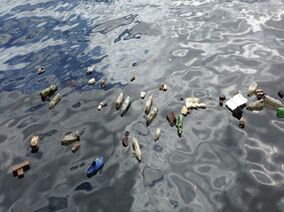海洋里的塑料垃圾正在失踪
|
You've probably heard that our oceans have become a plastic soup. But in fact, of all the plastic that enters Earth's oceans each year, just 1 percent has been observed floating on the surface. So where is the rest of it? This "missing" plastic has been a longstanding scientific question. To date, the search has focused on oceanic gyres such as the Great Pacific Garbage Patch, the water column (the part of the ocean between the surface and the sea bed), the bottom of the ocean, and the stomachs of marine wildlife.
But our new research suggests ocean plastic is being transported back onshore and pushed permanently onto land away from the water's edge, where it often becomes trapped in vegetation. Of course, plastic has been reported on beaches around the world for decades. But there has been little focus on why and how coastal environments are a sink for marine debris. Our findings have big implications for how we tackle ocean plastic. Plastic pollution can be reduced through local changes such as water refill stations, rubbish bins, incentives and awareness campaigns. It can also be reduced through targeted waste management policies to reduce, reuse and recycle plastics. We found container deposit schemes to be a particularly effective incentive in reducing marine pollution. |









